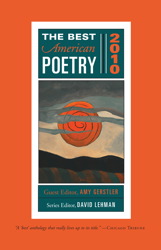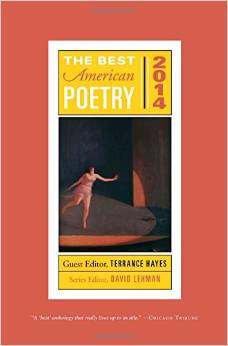Poetry Form - The Pantoum
The Pantoum Verse Form
by Ariadne Unst
 History.
History.
 Form.
Form.
 Your Composition.
Your Composition.
 References.
References.
 Example.
Example.
Do you want a form that unfolds memories of the past, of a slower time? Then the Pantoum
with its dreamy and enchanting repetitions may be the form you need.
The Pantoum originated in France, based on a form from Malaya.
The Pantoum's name and form derive from the Malayan pantun.
If you enjoy the music inherent in forms with refrains, also see
the Triolet and
the Villanelle.
-
History.
Historically, the Pantoum became
popular in Europe and later North America in the nineteeth and especially the twentieth century.
-
The Pantoum tradition as a poem first appeared in France, in the work of Ernest Fouinet in the nineteenth century.
Victor Hugo and Charles Baudelaire made the form fashionable.
For more on this history and for examples of the Pantoum, see
The Making of a Poem, edited by Mark Strand and Eavan Boland.
-
Examples include:
- Linda Pastan's Something about Trees
(in Imperfect Paradise);
- Carolyn Kizer's Parents' Pantoum;
- John Ashbery's Pantoum; and
- Nellie Wong's Grandmothers' Song.
-
Form.
[Note: in the Malayan, the pantun follows the same rhyme and line patterns as the
Pantoum. But pantun is traditionally improvised;
the first two lines of each quatrain present an image or an allusion;
the second two lines of each quatrain convey the theme and meaning, and may not
have an obvious connection with the first two lines.]
- In a traditional Pantoum:
- The lines are grouped into quatrains (4-line stanzas).
- The final line of the Pantoum must be the same as its first line.
- A Pantoum has any number of quatrains.
- Lines may be of any length.
- The Pantoum has a rhyme scheme of abab in each quatrain.
Thus, the lines rhyme alternately.
- The Pantoum says everything twice:
- For all quatrains except the first, the first line of the current
quatrain repeats the second line in the preceding quatrain; and the third line of the current
quatrain repeats the fourth line of the preceding quatrain.
- In addition, for the final quatrain, its second line repeats the (so-far unrepeated)
third line in the first quatrain; and its last line
repeats the (so-far unrepeated) first line of the first quatrain.
- Thus the pattern of line-repetition is as follows, where the lines of the first
quatrain are represented by the numbers "1 2 3 4":
1 2 3 4 - Lines in first quatrain.
2 5 4 6 - Lines in second quatrain.
5 7 6 8 - Lines in third quatrain.
7 9 8 10 - Lines in fourth quatrain.
9 3 10 1 - Lines in fifth and final quatrain.
|
In this example, we have 5 quatrains.
You could have more. You could have fewer.
- Your Composition.
The repetition in a Pantoum made this form popular with audiences. The
repetition allowed the listener to catch the poem more clearly at first hearing
or first reading.
Here are some steps to take in composing one:
- Draft the first quatrain. Be sure to use the Pantoum's rhyme scheme.
[When you have experience in writing the Pantoum, consider using the additional
structure offered by the original Malaysian form, the Pantun.]
- Layout the lines that will repeat - the second and fourth lines
go to their positions in the framework of the second quatrain, while the
first and third lines hold places in what will become the final stanza.
- Construct your second stanza.
- Layout the second and fourth lines of that quatrain
in the framework of the next quatrain.
- Continue with these steps.
Be sure to follow the above guidelines for form.
- When you are approaching the desired length for you Pantoum,
start looking for lines that fit in your current quatrain and can also work in the final quatrain.
- Like packing an inflated helium balloon into a suitcase,
tussle with modifying the repeated sentences to tug the poem into shape.
- As with all formal poems nowadays, it is vital that the form does not "drive" your poem.
If the rhyme scheme and form begin to feel forced, then you must assert
the poem's content.
- A Last Word
Just because you start with the intention of writing a Pantoum, you do not have to
keep your poem in that form if it does not work for you.
Your attempt to write a formal poem
may help you find words that you would not have found otherwise.
And you may decide that you choose to end up with a
poem in a different form, perhaps even a
prose poem.
-
Books
[Thanks for visiting.]
 Index of Poetry.
Index of Poetry.
 Highlights for Poetry.
Highlights for Poetry.
 Books of Poetry Form.
Books of Poetry Form.
 How to Write Poetry.
How to Write Poetry.
 Haibun.
Haibun.
 Haiku.
Haiku.
 Hay(na)ku.
Hay(na)ku.
 Rengay.
Rengay.
 Tanka.
Tanka.
 Tan-renga.
Tan-renga.
 Concrete.
Concrete.
 Ghazal.
Ghazal.
 Lai.
Lai.
 Pantoum.
Pantoum.
 Prose poem.
Prose poem.
 Rondeau.
Rondeau.
 Rubáiyát.
Rubáiyát.
 Sestina.
Sestina.
 Skaldic verse.
Skaldic verse.
 Sonnet.
Sonnet.
 Terza rima.
Terza rima.
 Triolet.
Triolet.
 Tritina.
Tritina.
 Villanelle.
Villanelle.
 El Poema Concreto.
El Poema Concreto.
 Books of Poetry Form.
Books of Poetry Form.



